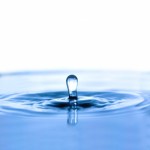
When I read the literature provided I discovered some interesting facts about how we are charged for our water. So I thought I would share them with you. Details may be slightly different in your area but the principles are the same.
Unmetered properties
There are three elements to your bill
- Standing charge
The standing charge is a fixed amount for all properties.
This charge covers your water supply service together with a charge for wastewater, service water drainage and highway drainage.
- Rateable value charge
The rateable value charge for each property is calculated on the rateable value of the property. To calculate the charge the rateable value of the property is multiplied by the rateable value charge.
There may be a minimum charge applied if the total of these two charges is less than a specified amount.
- Additional charges
Separate charges may apply for the supply of unmetered water to swimming pools and garages with a completely separate supply.
Metered properties
There are two elements to your bill
- Standing charge
The standing charge is based on the size of the water meter fitted to your water supply. Most households are served by a 15mm or 20mm meter and therefore attract the lowest level of standing charge.
If your meter is larger than 20mm you may be able to have your charge reduced if you water company agree that it is larger than necessary for your supply requirements.
This charge covers your water supply service together with a charge for wastewater, service water drainage and highway drainage.
- Volume charges
You will be charged for both the water you use as well as the water you return to the sewage system.
The volume charge for the water supply is based on the amount of water supplied to your property and recorded on the water meter. The number of cubic metres used is multiplied by the water volume charge to ascertain the amount charged.
The volume charge for the sewage service is based on 92.5% of the volume of water supplied.
This is to reflect that not all the water you use returns to the sewer. The 92.5% is an assessment of the typical percentage return.
If you can produce evidence that you return much less than 92.5% of water supplied to the sewer then your bill may be adjusted. God only knows how you will get the evidence!
Conclusion
For those of us who do not have a water meter we may have paid little attention to our water bills as there is little we can do to reduce them. However, if you have a meter fitted then there is a lot you can do to help reduce your bills, read my post 'How to reduce your water bills' to get some tips.
Image: zirconicusso / FreeDigitalPhotos.net